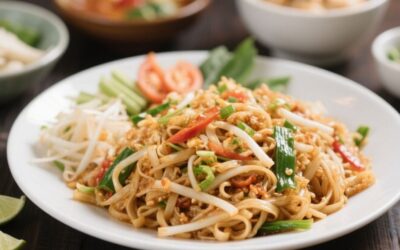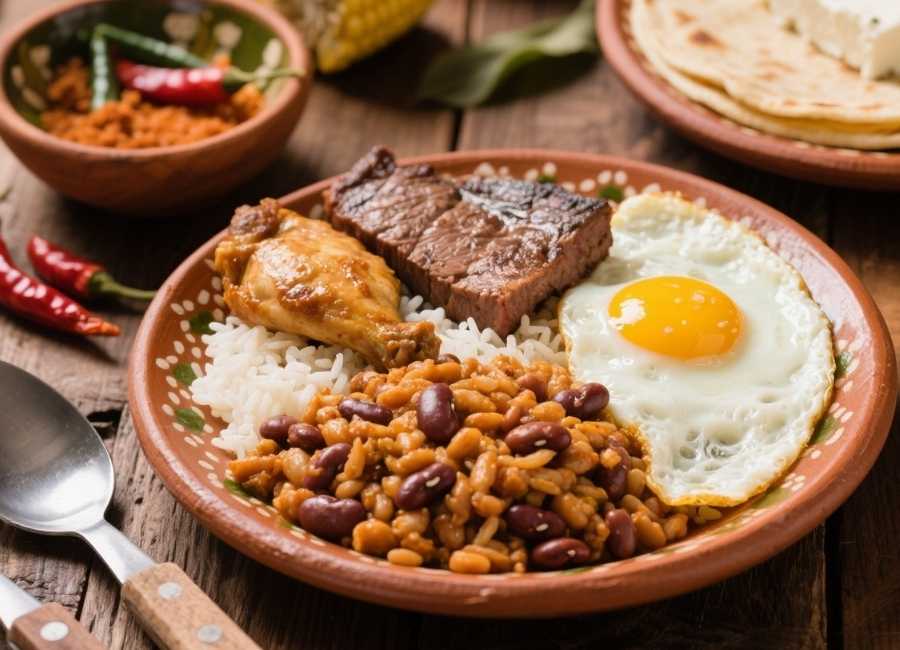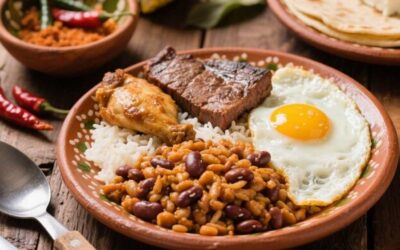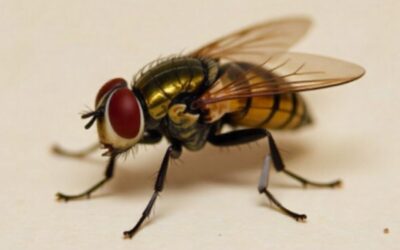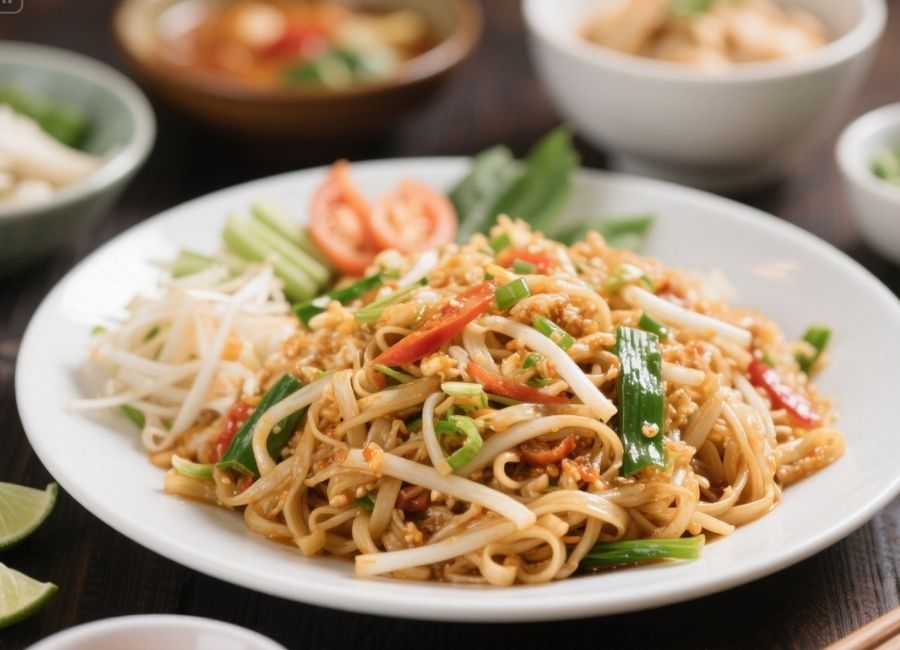When it comes to Asian cuisine, few dishes are as popular or beloved as Pad Thai. This flavorful stir-fried noodle dish from Thailand has graced restaurant menus worldwide and become a favorite for foodies. But just how healthy is Pad Thai? Can this delicious treat also be nutritious, or does it fall into the category of indulgence-only meals?
This blog explores the nutritional profile of Pad Thai, its key ingredients, the benefits of the dish, and ways to make it healthier without sacrificing its signature flavor.
What is Pad Thai?
Pad Thai is a classic Thai street food dish consisting primarily of rice noodles stir-fried with eggs, tofu, shrimp, or chicken. The base flavors come from tamarind paste, fish sauce, sugar, and lime juice, which create the perfect balance of savory, tangy, and sweet. Toppings like peanuts, bean sprouts, and green onions add texture and brightness to the dish.
While Pad Thai is widely enjoyed for its delicious taste, its nutritional content depends on the ingredients and cooking methods used. Understanding these components is key to assessing whether Pad Thai can fit into a healthy diet.
The Nutritional Breakdown of Pad Thai
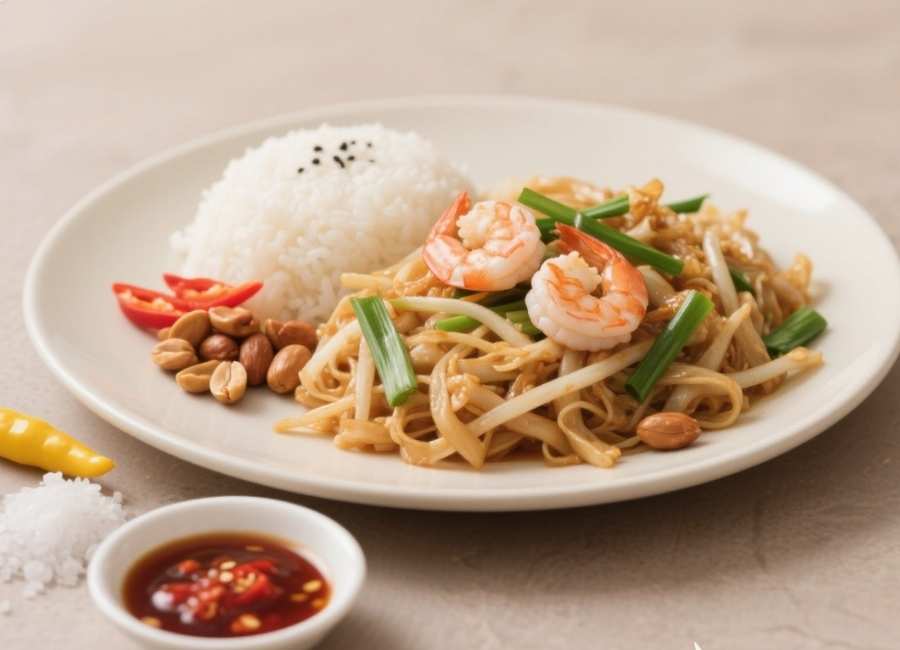
The nutritional value of Pad Thai can vary greatly based on portion size, preparation, and specific ingredients. Here’s a general guideline for a standard serving of restaurant-style Pad Thai (approximately 400-500 grams):
Calories
Between 600-800 calories per serving
Pad Thai is calorie-dense, making it a satisfying option, but portion control is key when trying to manage overall calorie intake.
Macronutrients
Carbohydrates: 60-80 grams
Rice noodles are the primary source of carbohydrates.
Protein: 15-30 grams
The protein content varies depending on the choice of chicken, shrimp, or tofu. Eggs also contribute protein.
Fats: 15-25 grams
The inclusion of peanuts, cooking oils, and eggs contributes to the fat content, with varying levels of saturated and unsaturated fats.
Sodium
1000-1500 milligrams
Fish sauce and soy sauce are high in sodium, which can add up quickly, especially in restaurant-prepared versions.
Fiber
Around 4-6 grams
Bean sprouts, peanuts, and optional vegetables like carrots or bell peppers boost the fiber content.
Micronutrients
Pad Thai offers essential vitamins and minerals, including:
Vitamin A (from eggs and vegetables)
Vitamin C (from lime juice and fresh ingredients)
Iron (from tofu, shrimp, or chicken)
Calcium (in small amounts from eggs and tofu)
While the dish offers a range of nutrients, it’s worth noting the high sodium and calorie content, which may be a concern for some people.
Health Benefits of Pad Thai
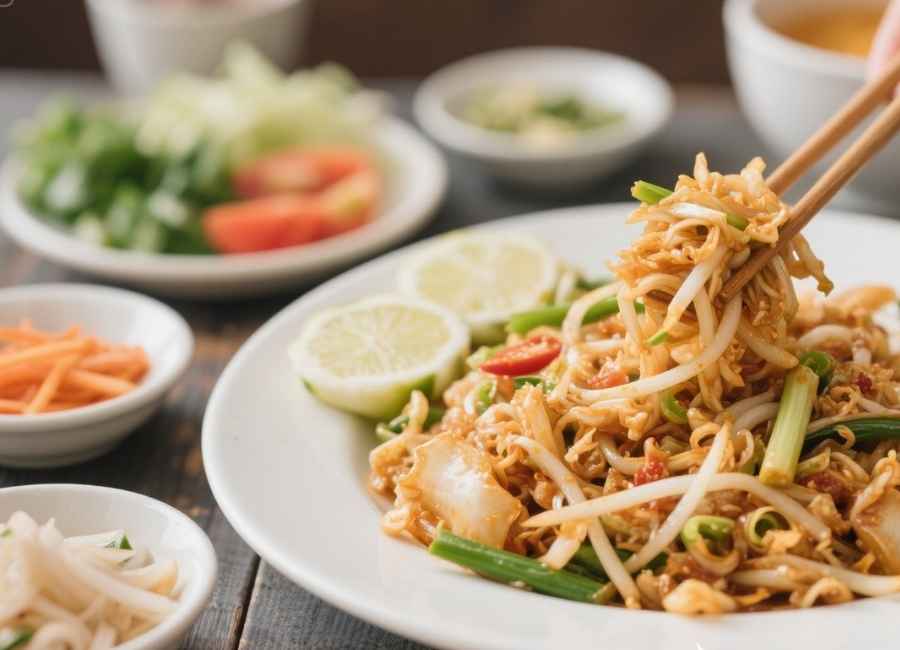
Despite some nutritional caveats, Pad Thai offers several health benefits when enjoyed mindfully. Here’s why this dish can be a valuable addition to your meals:
1. A Source of Complete Protein
The combination of eggs, tofu, and shrimp or chicken provides all nine essential amino acids, making Pad Thai a good source of complete protein. This helps with muscle repair, immune function, and overall energy.
2. Rich in Antioxidants
Ingredients like lime juice, tamarind, and bean sprouts are rich in antioxidants, which can help reduce inflammation and combat free radicals in the body.
3. Gluten-Free Option
Since rice noodles are naturally gluten-free, Pad Thai is a safe and satisfying choice for individuals with gluten sensitivities or celiac disease.
4. Balanced Flavor Profile Encouraging Satiety
The balance of sweet, salty, sour, and umami flavors not only enhances taste but may also contribute to satiety, reducing the urge to overconsume other snacks or desserts.
5. Versatility for Dietary Preferences
Pad Thai offers flexibility. Vegetarians can opt for tofu, while shrimp or chicken appeals to meat-eaters. The dish can also be modified for vegan diets by substituting fish sauce for soy sauce and eggs for plant-based alternatives.
How to Make Pad Thai Healthier at Home
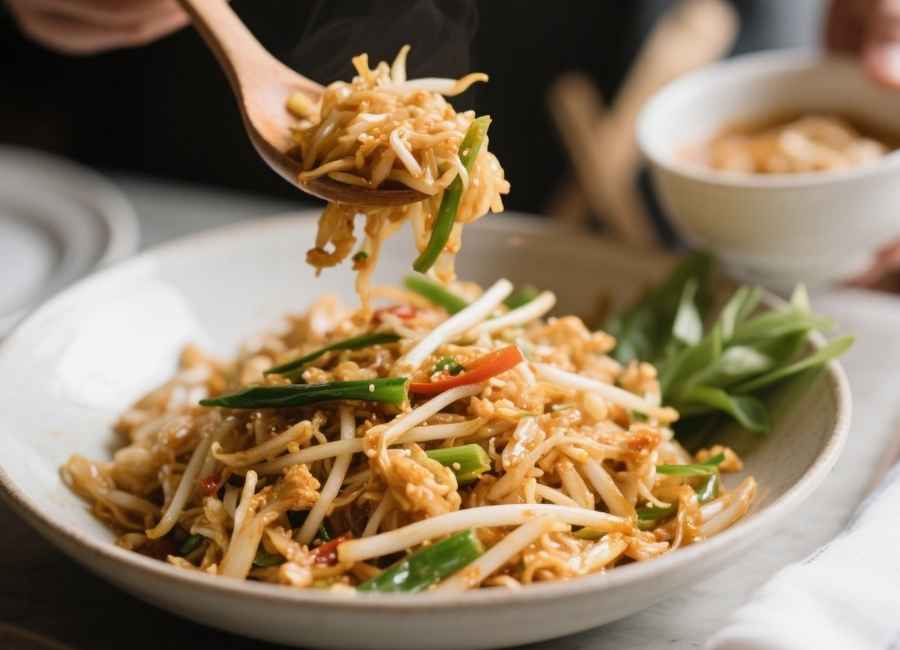
While restaurant Pad Thai can be calorie-heavy, preparing it at home offers the chance to tailor the dish to your dietary goals. Here’s how to make a healthier version:
1. Switch the Noodles
Instead of traditional rice noodles, try using:
- Zucchini noodles (zoodles) for a low-carb option.
- Whole-grain rice noodles for added fiber and nutrients.
2. Boost the Vegetables
Add a variety of colorful vegetables like broccoli, carrots, bell peppers, or snap peas. These increase the fiber, vitamins, and minerals in the dish while adding vibrant color and crunch.
3. Limit the Sodium
- Go light on fish sauce and soy sauce, or opt for low-sodium versions.
- Use fresh herbs like cilantro and basil to enhance flavor without added salt.
4. Reduce the Sugar
Consider using small amounts of natural sweeteners like honey or maple syrup instead of refined sugar. You could also rely on the natural sweetness of tamarind or lime.
5. Lighten the Cooking Oil
Use a non-stick pan or wok to reduce the amount of oil needed for stir-frying. Opt for heart-healthy oils like olive oil or avocado oil when required.
6. Balance the Protein
While adding tofu, shrimp, or chicken, stick to portion sizes (3-4 ounces per serving) to keep the dish balanced. You can also go plant-based by swapping meat for tempeh or edamame.
7. Adjust Toppings with Care
Peanuts can be calorie-heavy, so use them sparingly if you’re watching your intake. Alternatively, use roasted chickpeas or sunflower seeds as a lower-calorie topping.
[Pro Tip]: Pair Pad Thai with a light, refreshing side like cucumber salad or green papaya salad for added nutrition and flavor variety.
Common Misconceptions About Pad Thai’s Healthiness
While Pad Thai is often criticized for being calorie-dense, much of this perception comes from oversized restaurant portions and excessive use of high-sodium sauces and oils. With small tweaks and mindful preparation, Pad Thai can easily become a balanced meal that fits a variety of dietary needs.
Additionally, many people believe that Pad Thai is inherently unhealthy because it tastes indulgent. However, the natural ingredients and balance of protein, fiber, and essential nutrients prove otherwise.
Adding Pad Thai to a Balanced Diet
Like any dish, Pad Thai is best enjoyed in moderation or as part of a balanced meal plan. If you eat it occasionally and make adjustments to its preparation, it can certainly support a healthy and varied diet. Consider pairing it with a side of vegetables or a light broth-based soup to make the meal even more nourishing.
Beyond just health, Pad Thai connects us to the vibrant culinary tradition of Thailand, where meals are celebrated with joy, mindfulness, and care. It’s a dish that brings people together around a table, and with the right approach, it’s one that can nourish both body and soul.










